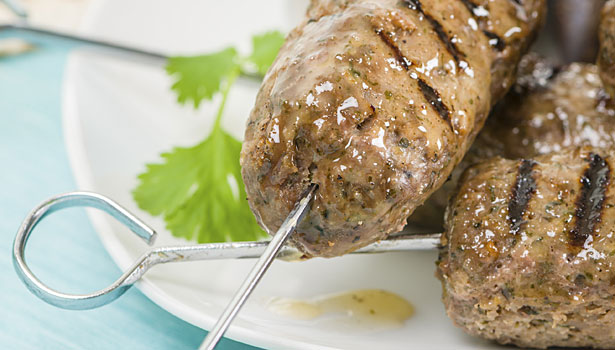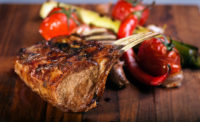State of the Industry: Lamb
Lamb on the menu

Today’s consumers are well-traveled and like to explore foods from around the globe. Not surprisingly, lamb is a prominent red meat in traditional cuisines from around the world, and American consumers’ increasing interest in authentic world flavors is driving lamb’s growth on restaurant menus.
A quantitative research study by Datassential MenuTrends reveals that lamb is being offered on menus more and more in restaurants beyond fine dining. Based on data from 4,800 restaurants including national chains, regional chains and independent restaurants, the study reports “lamb has been on a steady rise in use among U.S. chains and independents with an increasing menu penetration of 13 percent compared to 4 years ago.”
The study notes lamb entrée penetration has shown growth in contrast to many top menued proteins, which have shown declines in recent years.
Much of this growth ties back to the popularity of various ethnic cuisines, including African, Indian and Mediterranean foods. Lamb is featured in dishes ranging from harissa kabobs to braised lamb sandwiches to cumin lamb tacos.
Although menuing of lamb has shown growth in non-fine dining chains and other independent restaurants, lamb remains a quintessential part of fine-dining menus. A reported 63 percent of fine-dining operators include lamb on their menus, with rack of lamb being the most common cut featured.
Lamb remains heavily favored as a center-of-plate entrée item but is also growing elsewhere on the entrée menu. U.S. chains and independent restaurants are putting lamb on the menu more frequently in less traditional ways, as lamb has grown as a protein used in burgers, sandwiches, pizza and pasta. In the fine-dining segment, merguez (a lamb sausage with North African spices) is one of the fastest-growing entrée proteins mentioned.
Furthermore, lamb is experiencing growth in the appetizer category. The popularity of small and shareable plates has contributed to the growth of lamb on the appetizer menu at fine-dining, chain and independent restaurants in recent years. Lamb lollipop chops and lamb sliders are popular small-plate offerings.

The study also noted that lamb is pairing well with an array of trendy vegetables and grains. Lamb is menued more often with some of today’s fastest-growing ingredients, including quinoa, farro, kale, Swiss chard and butternut squash.
The American Lamb Board has been working to make lamb more approachable. American Lamb Board-sponsored “Lamb Jams” and other restaurant promotional activities have focused on highlighting cuts beyond the rack.
Specifying the origin of lamb continues to grow in popularity on menus. Among fine-dining operators offering lamb, more than 22 percent specify it as domestic, while imported lamb sources are mentioned by about 9 percent of restaurants. Colorado lamb is the top regional lamb mentioned.
Beyond simply stating the regional origin of the lamb they feature, today’s chefs and their customers care about further origin details, and many menus call out specific farm and ranch sources that provide their fresh local lamb.
The American Lamb Board recently published a booklet highlighting this “shepherd to chef” connection. The booklet highlights relationships between shepherds who directly sell to chefs and included recipes from these “lambassador” chefs.
“I really value creating lasting relationships with local farmers,” says Chef Michael Scelfo of Alden & Harlow Restaurant in Boston. “And I absolutely agree that responsibly raised, happy sheep make for really delicious lamb.”
Looking for a reprint of this article?
From high-res PDFs to custom plaques, order your copy today!





